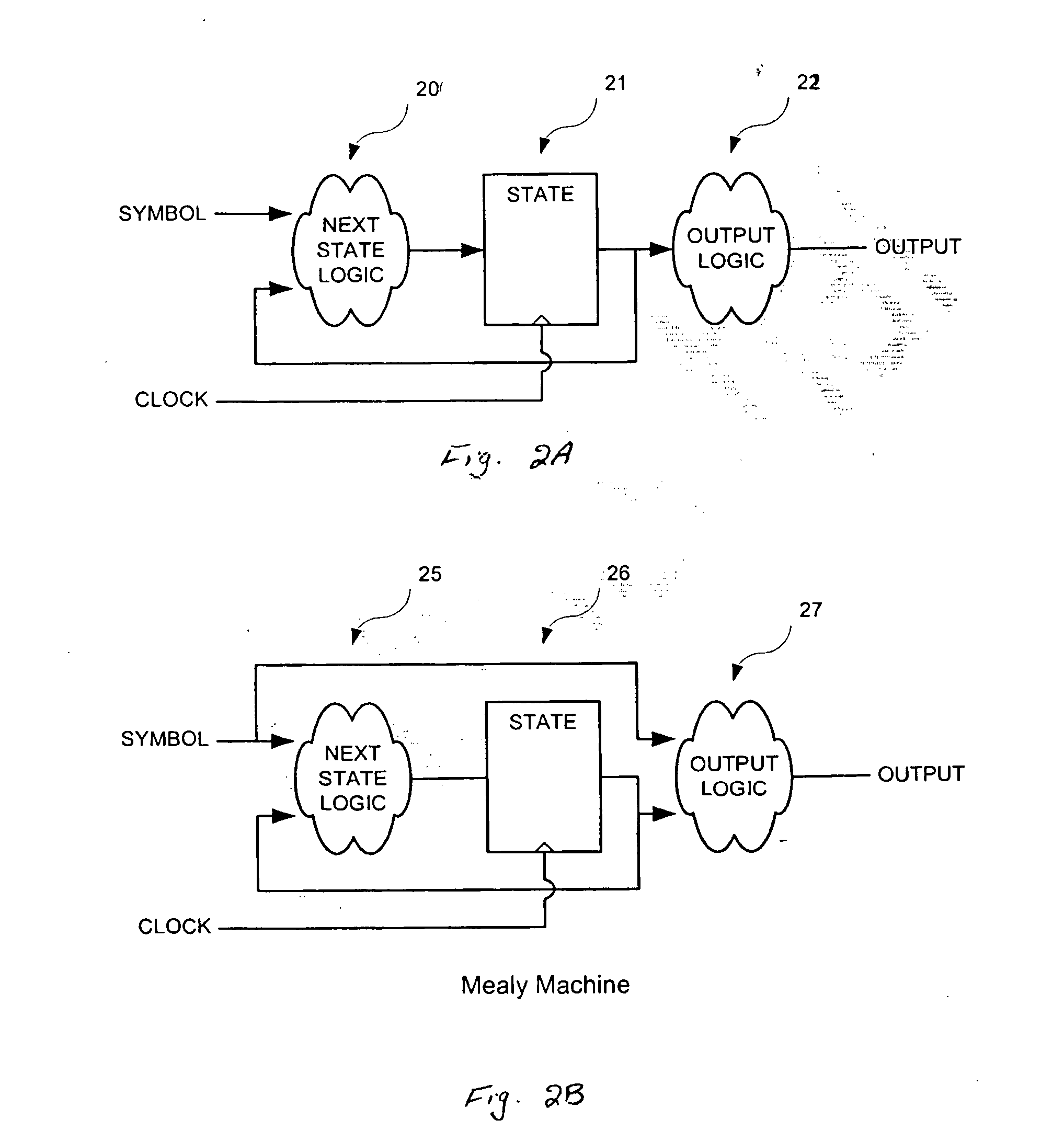Efficient representation of state transition tables
a transition table and state technology, applied in the field of integrated circuits, can solve the problems of sacrificing content delivery or network security, increasing the amount of memory needed to store this data, and qos and signature-based security services are finding it increasingly difficult to keep up with the demands of matching packet content, etc., and achieves high data throughput and small memory.
- Summary
- Abstract
- Description
- Claims
- Application Information
AI Technical Summary
Benefits of technology
Problems solved by technology
Method used
Image
Examples
Embodiment Construction
FIG. 4 is a flowchart 200 of steps carried out to renumber the states of a finite state machine (FSM), in accordance with one embodiment of the present invention. At step 210, the renumbering of state begins. At step 220, the transition table associated with the FSM is generated using one of a number of known techniques. At step 230 a parameter s, which keeps track of the states is initialized to 0. Thereafter, a score is computed and assigned to each of the states as iteration is made through steps 240, 250 and 260, and as is seen from the flowchart 200. A number of different techniques may be used to compute these scores, as is described further below.
In step 270, the states are sorted according to their computed scores. In one embodiment, in step 270, the states are sorted according to an ascending order of their computed scores. In another embodiment, the states may be sorted using other sorting algorithms in accordance with their computed scores. In state 280, the states are r...
PUM
 Login to View More
Login to View More Abstract
Description
Claims
Application Information
 Login to View More
Login to View More - R&D
- Intellectual Property
- Life Sciences
- Materials
- Tech Scout
- Unparalleled Data Quality
- Higher Quality Content
- 60% Fewer Hallucinations
Browse by: Latest US Patents, China's latest patents, Technical Efficacy Thesaurus, Application Domain, Technology Topic, Popular Technical Reports.
© 2025 PatSnap. All rights reserved.Legal|Privacy policy|Modern Slavery Act Transparency Statement|Sitemap|About US| Contact US: help@patsnap.com



